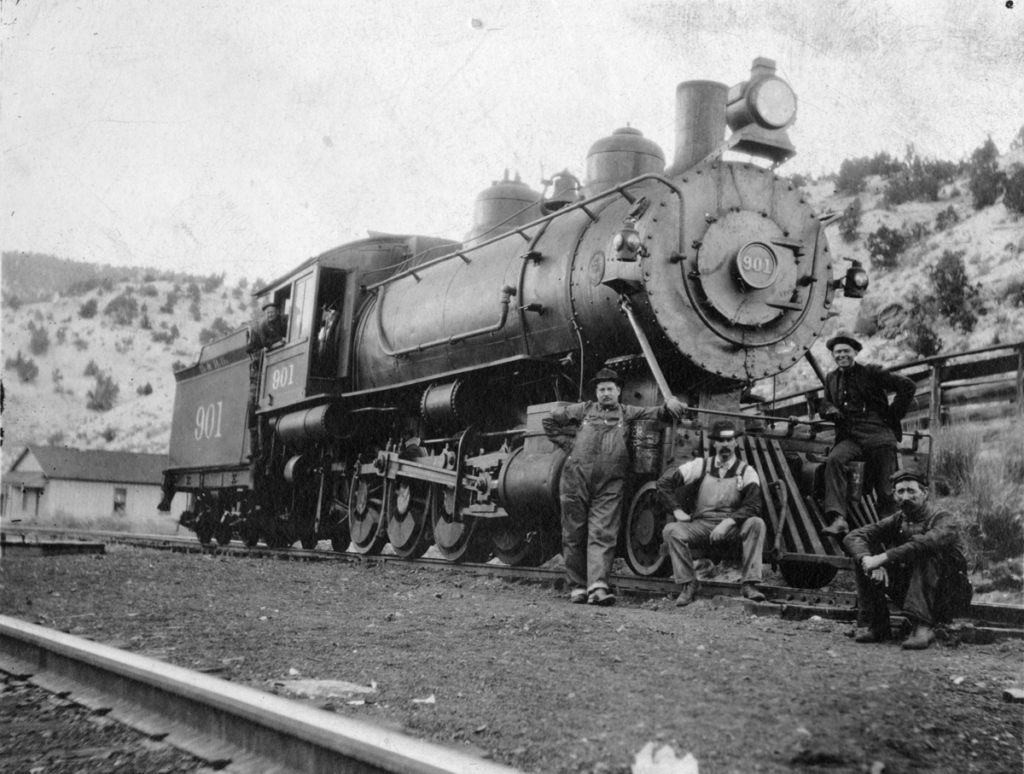Welcome back to our second article regarding the salvation of Park City’s railroad blues. In our first installment we discussed the railroading aptitude of Brigham Young’s third son – John Willard Young (JW). By 1888 JW possessed twenty-year’s experience as an iron horse entrepreneur. A new opportunity beckoned – connecting Salt Lake City with Park City, Coalville, and beyond.
The residents and commercial interests of these towns were desperate for a competitor to the Union Pacific Railroad (UP). By 1887 UP enjoyed a monopoly concerning the rail-related transportation needs of Park City. They achieved this by eliminating their only competitor – the Utah Eastern Railroad.
Originally chartered to construct a narrow gauge (three-foot) railroad from Coalville to Park City to Salt Lake City, by the time the company reached Park City in December 1880 their funds were exhausted. Engaging in financial and securities chicanery, UP gained control of the Utah Eastern then shut it down in 1887. A true coup d’ état. Just as the mines were extracting bullion from the treasure ladened mountains surrounding Park City, the UP was intent to extract their own riches unfettered by competition. The harder the UP squeezed the louder the prayers for salvation. JW was listening.
Park City and Coalville represented alluring new markets for JW and his financiers. The mining industry featured a near insatiable appetite for coal, timber (both for construction and fuel), salt, and other commodities. Besides, the mines needed to ship their ore to outside markets. In addition, Salt Lake City required ever increasing quantities of cost-effective coal – emphasis on cost effective. Transporting the “black diamonds” from Coalville was expensive and traffic in Parley’s was a mess – the toll road between Salt Lake City and Park City was constantly choked with wagons.
JW appreciated the engineering and financial challenges of constructing a railroad between Park City and Salt Lake City. However, he was bolstered by an unshakeable belief in the benefits of a direct rail connection and its potential business bonanza. Travel time would be reduced from ten hours to two, with a corresponding decline in drayage rates.
Exercising his oratory, visionary, and financial skills, JW secured the required funding from both local and outside financial markets. Conquering the steep grades (6 percent) of Parley’s precluded construction of a standard gauge (4 feet, 8 and ½ inches) railroad. Thus, a narrow gauge (three-foot) design was selected. Construction proceeded at a remarkable pace, with regular service commencing in May 1890.
Alas, JW failed to realize the benefits of directly connecting the two growing metropolises. Construction costs of the Salt Lake and Eastern Railway vastly exceeded estimates. Over-extended, JW lost control of the company, which was merged into the second incarnation of the Utah Central Railway, a subsidiary of the Denver & Rio Grande Western Railway. The D&RGW would break the UP monopoly and serve Park City until 1947 – a period of 57 years.

Credit: The Park City Historical Society & Museum, Nan McPolin Collection